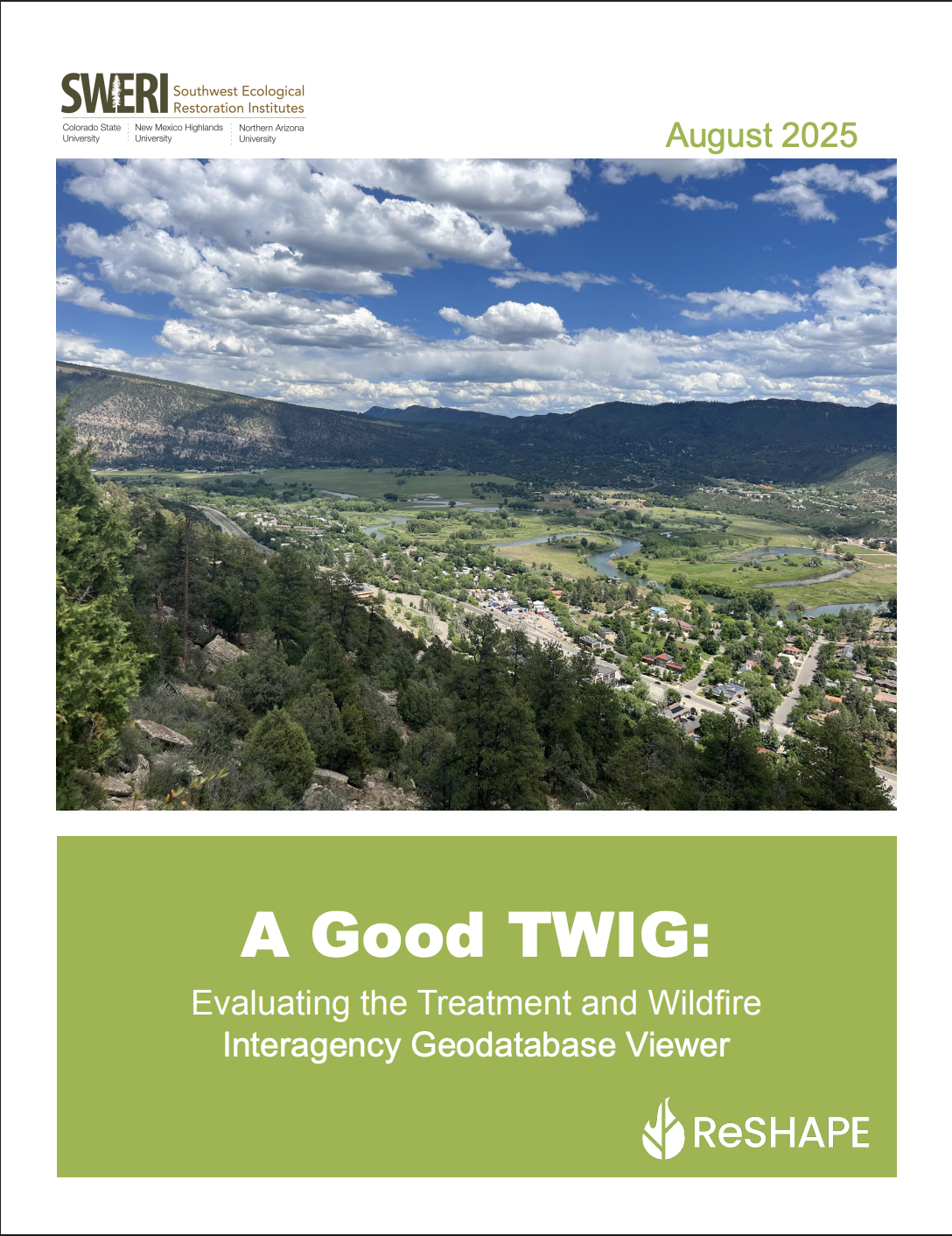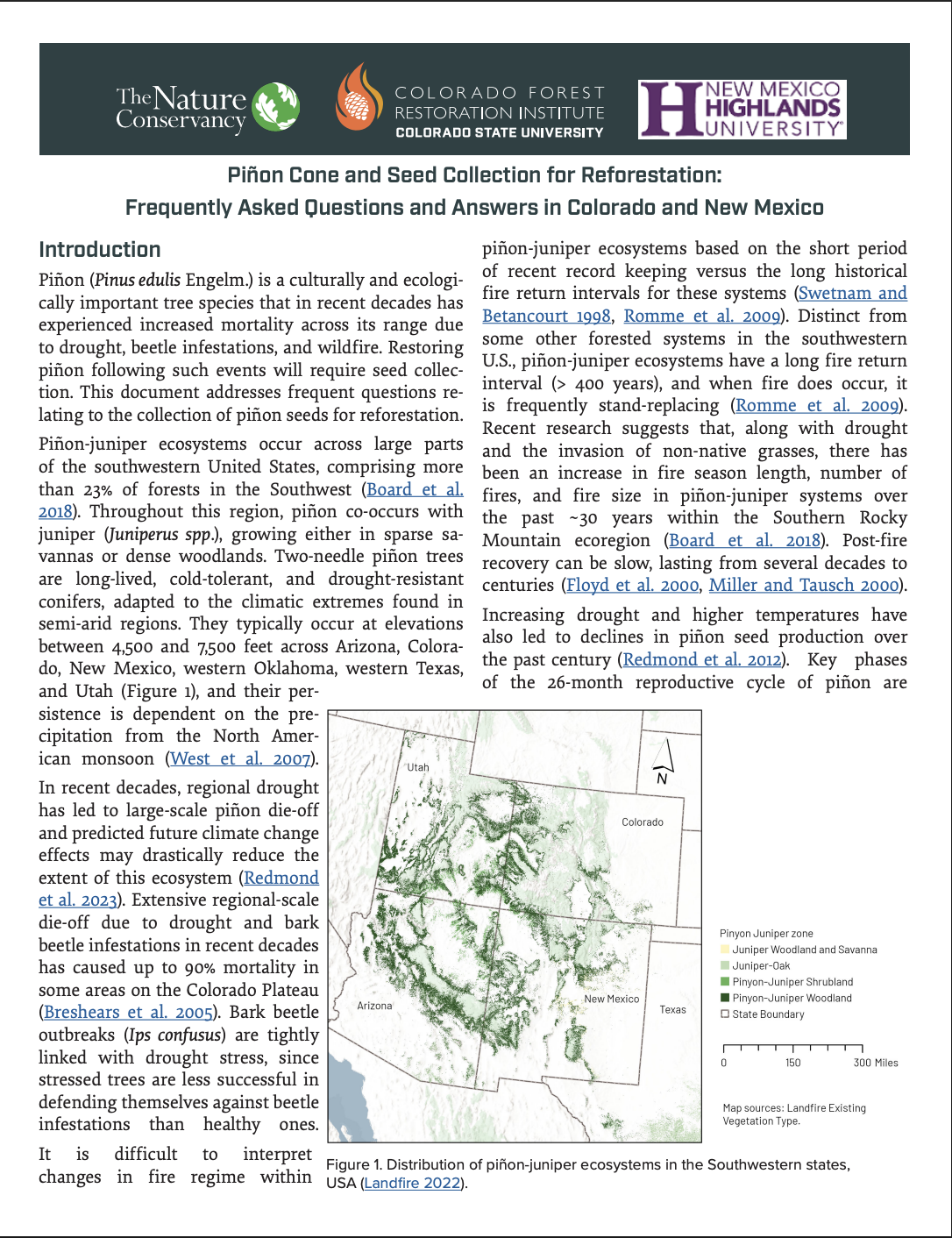-
Treatment and Wildfire Interagency Geodatabase Evaluation Report

Read HERE
-
As Wyoming sage grouse near their cyclic high, northeastern population tumbles
“The House Draw Fire, a massive blaze that eliminated much of the region’s best sagebrush habitat in 2024, is one culprit in a downward population trend not seen anywhere else […]
-
Piñon Cone and Seed Collection for Reforestation: Frequently Asked Questions and Answers in Colorado and New Mexico

Read HERE
-
Assessing fuel treatments and burn severity using global and local analyses
The article “Assessing Fuel Treatments and Burn Severity Using Global and Local Analyses” looks at the effects various treatments had on burn severity in areas impacted by the 2021 Bootleg Fire. “Under consistent […]
-
Bucking the suppression status quo: incentives to shift the wildfire management paradigm around natural ignitions
The technical note “Bucking the Suppression Status Quo: Incentives to Shift the Wildfire Management Paradigm Around Natural Ignitions” is based on a multi-round survey of fire and land management professionals in […]
-
Tree rings reveal persistent Western Apache (Ndee) fire stewardship and niche construction in the American Southwest
The article “Tree Rings Reveal Persistent Western Apache (Ndee) Fire Stewardship and Niche Construction in the American Southwest” examines the effects of fire use by a low-density population on the fire history of east-central Arizona. […]
-
Fire directly affects tree carbon balance and indirectly affects hydraulic function: Consequences for post-fire mortality in two conifers
“The mechanistic links between fire-caused injuries and post-fire tree mortality are poorly understood. Current hypotheses differentiate effects of fire on tree carbon balance and hydraulic function, yet critical uncertainties remain […]
-
Quality assured spatial dataset of wildfire containment firelines and engagement outcomes 2017 to 2024
“The escalation of wildfires in the USA, coupled with rising firefighting costs and decreasing workforce capacity, underscores the critical need to evaluate the efficiency and effectiveness of containment measures. However, […]
-
A panoramic picture of fires in ponderosa pine ecosystems

“Individual fire history studies paint a picture of how often and how severely fires burned on specific landscapes, providing valuable points of evidence for land management decisions. Syntheses of multiple […]
Categories
- Article/Book/Chapter
- Course/Curriculum
- Education & Training
- Highlights
- Maps, Models, and Apps
- Newsletter/Digest
- Pre and Post Emergency Resources
- Publication
- Research Brief/Synthesis
- Technical Report
- Uncategorized
- Video
- Video & Audio Resources
- Webinar
- Website
Archive
- December 2025
- November 2025
- October 2025
- September 2025
- August 2025
- July 2025
- May 2025
- April 2025
- March 2025
- February 2025
- January 2025
- November 2023
- October 2023
- September 2023
- May 2023
- April 2022
- March 2022
- February 2022
- January 2022
- October 2021
- August 2021
- July 2021
- May 2021
- March 2021
- February 2021
- January 2021
- December 2020
- November 2020
- October 2020
- September 2020
- August 2020
- July 2020
- June 2020
- May 2020
- April 2020
- March 2020
- July 2019
- July 2018
- June 2018
- October 2017
- September 2017
- June 2017
- April 2017
- March 2017
- November 2016
- October 2016
- August 2016
- May 2016
- April 2016
- November 2015
- October 2015
- September 2015
- June 2015
